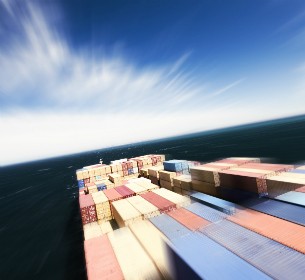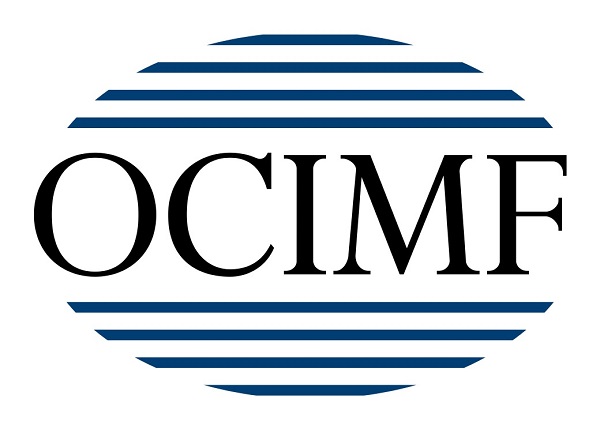For this week’s spotlight, Catherine Austin, Editor-in-Chief of Fathom’s industry magazine Ship Efficiency: The Insight caught up with Ronald Spithout, President Inmarsat Maritime to find out how Inmarsat is supporting the industry to exploit big data and drive software application innovation with the power of connectivity.
How Is Inmarsat Supporting The Industry To Fully Embrace Big Data?
There are two major steps that Inmarsat is taking to make sure that big data becomes a reality on board all ships.
Firstly, we have developed innovative, reliable satellite communication services that will provide a high throughput and a seamless global coverage network, ensuring that ships never leave a cellular coverage area.
Secondly, we are enabling greater uptake of software applications that utilise big data on ships by working to remove the barriers to application uptake related to unpredictable connectivity demands and costs.
How Has Inmarsat Developed A Seamless Global Coverage Network?
Inmarsat is building the world’s first global Ka-band cellular network, named Global Xpress.
It started a few years ago when Inmarsat decided to develop new technology in order to transform the VSAT network into a mobile cellular network. This is revolutionary because the VSAT network is historically not mobile, therefore this is the first time that a network like this is being rolled out.
We are launching three Global Xpress satellites that will eventually provide completely seamless, global coverage. Two Global Xpress satellites have been launched to date and the third was launched in August 2015. So by very early next year, with these three Global Xpress satellite launched, we will have that network in place. A fourth Global Xpress satellite will also be launched for redundancy and to ensure extra coverage when required.
Once the three Global Xpress satellites are in place, ships signed up to the Global Xpress service will never leave cellular coverage – the key is global mobility.
The bandwidth that we are using for the Global Xpress network is Ka-band. This bandwidth allows very high throughput to and from the ship and gives ultimate reliability. These characteristics are what you need if you want to utilise software applications to their maximum potential and exploit big data on board.
Between the Global Xpress network Ka-band and Inmarsat’s Fleet Broadband bandwidth being L-band, this is a truly managed, seamless service.
What Is The Industry’s Appetite For the Global Xpress Service?
Today we have about 2500 ships waiting for an upgrade, so there is a large appetite for migration up to Global Xpress service.
What Do You See As A Barrier To Big Data Exploitation By The Industry?
If you look at usage of data on-board ships so far it has been extremely limited. The unpredictability of the costs related to software application data connectivity demands is a major barrier for application uptake in the industry.
At the moment, no application provider can predict the cost of the utilisation of the application on-board a ship because at the moment every ship operator or manager is paying for the usage of their supply terminals plus all traffic. Many software applications will demand connectivity and data traffic which can be fairly unpredictable. The last thing that a ship operator or manager wants is unpredictable costs.
It is for this reason that, although there are many applications out there that can make sense of the data, because their functionality depends on connectivity and their use on-board may bring a large, un-predicable data demand that the uptake of applications amongst the shipping communities has been limited.
Therefore, Inmarsat is working to dismantle that barrier by removing the unpredictability of data costs from application use. In the future every software application will come with the data included thanks to the service that Inmarsat is developing.
How Is Inmarsat Dismantling The Barriers To Greater Software Application Uptake?
Last year in an attempt to open the network by means of application interfaces so that the network becomes predictable and manageable by the application, Inmarsat stepped into a joint cooperation with CISCO to build a software layer in between our satellite network and the software application providers.
This software layer, called the Inmarsat Service Enablement Platform (ISEP) and the Inmarsat Gateway will enable a revolutionary change as we will be dismantling all of the barriers for application providers to get on-board ships and provide their services on a flat fee basis as we will be able to discriminate traffic from applications.
It will suddenly allow the application provider to go to the ship and say this is my application, this is the monthly subscription, it is flat fee and all the traffic is already included. With the ISEP system, for certain applications the invoice for the traffic is sent to the application provider and not the ship owner, operator or manager for the vessel. This is a fundamental shift in approach.
By developing ISEP, Inmarsat is removing the unpredictably of cost element for the ship operators and managers. This will open the door for many applications that can enhance ship efficiency and environmental performance as well as safety and crew welfare.
How Will The ISEP Platform Function?
The ISEP gateway is the commercial name for the physical form of the CISCO joint development. The ISEP platform will enable solutions.
From a technology level what will happen is that the managed service of Inmarsat will come together with the hardware for the vessel and that hardware will be pre-loaded with the software applications from what we call Certified Application Providers.
In some sense it is the same as when you buy a brand new iPad with pre-installed applications. It is stored by us on our hardware and if the ship operator or manager thinks it is a good idea then he can purchase the software application.
Effectively the ship operator or manager can pick and choose which applications they want to use from Inmarsat’s Certified Application Providers.
How Can Companies Become Certified Application Providers?
We have embarked on a programme called the Certified Application Programme which companies can join.
What Is The Level Of Interest In The Certified Application Programme Thus Far?
There is definitely a community building of application providers who would like to become Certified Application Providers.
Also, we started to host Inmarsat developer conferences, the first one was held in April this year and approximately 400 people joined that conference representing a community of interested parties that would like to become Certified Application Providers. And that is ongoing.
How Is Inmarsat Fostering Future Software Application Innovation?
One of our strategies going forward is to find out what applications may have great potential in the industry and nurture them to build up communities of innovation. Therefore, Inmarsat will be opening offices, that we will call ‘innovation hubs’ in innovation centres where maritime college university students are starting up new businesses, where you will find training centres for the industry and industry pioneers developing new technologies.
We will place innovation hubs and test facilities in easy reach of innovators so that they can come to us and test their application over Inmarsat’s network because we are onsite.
This will bring us much closer to where the innovation happens. We don’t know what the killer application of tomorrow’s industry will be, so we have to go out and be as close as we can to the bright minds who are sitting on the next killer application.
What Is Your Definition Of A Smart Operator?
I don’t have a definition, the way I see it is that I am a passenger on a journey. What is important for Inmarsat is that this is a topic that we want to be part of as it transforms the way that ships are using communications.
Years ago communications were seen as cost centres. What would it cost to make a phone call? What would it cost to provide internet access?
All these smart shipping discussions are leading to a situation where communications is seen as a profit driver or an efficiency driver rather than a cost centre.
And the one winning the race is the smart operator.
Fathom News
To contact the editor responsible for this article, email editor@fathom-mi.com

































